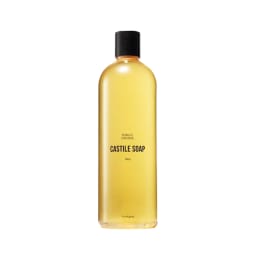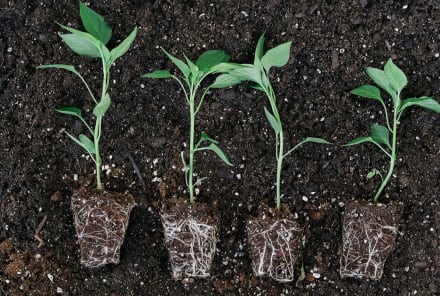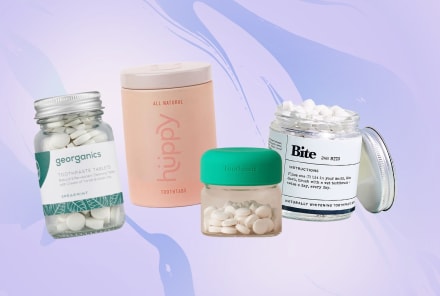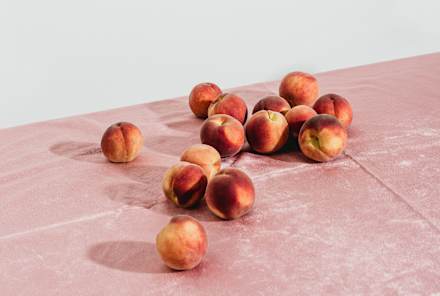Advertisement
The 5 Best Biodegradable Soaps Of 2023 For Responsible Camping

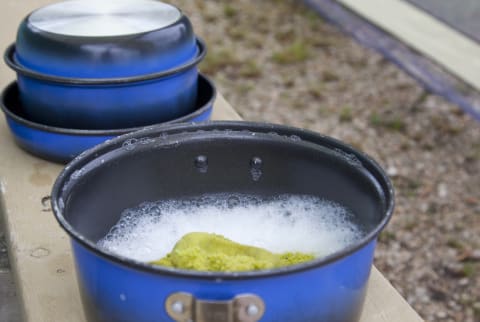
While some choose to treat camping as a time to go au naturel and forgo soaps altogether, others enjoy the feeling of a quick rinse or dishwashing after a long day of hiking. And that's totally fine—as long as your suds don't harm the wildlife around you. We spoke with a representative of Leave No Trace to learn what to look for in an eco-friendly, biodegradable soap that will leave you, your plates, and your surroundings sparkly clean.
Quick List:
What makes soap biodegradable?
Biodegradable soaps are quicker and cleaner to decompose in the environment than detergents, which tend to be higher in chemical additives.
JD Tanner, the director of education and training at Leave No Trace, explains that there are a few reasons to use biodegradable soaps in the backcountry—especially if you're near a water source.
For starters, conventional soaps often contain surfactants that lower the surface tension of water. These can make it harder for water striders to get where they need to go, as well as break down certain aquatic animals' mucus layers, which protect them from harmful bacteria and parasites. The phosphates in some soaps and detergents can also contribute to algae blooms that deprive aquatic areas of oxygen, which is why many states are now banning them in household and personal care products.
Biodegradable soaps won't contain as many of these harmful ingredients and are safer to use in the backcountry. However, in accordance with Leave No Trace Principles, you should only use a small amount of them at a time and never apply them within 200 feet of a water source.
What to look for in a biodegradable soap.
Here's what Tanner recommends looking for in an outdoors-friendly soap:
- SLS-free and SLES-free: These are both surfactants that will reduce surface tension of the water and could harm aquatic life.
- Paraben-free: Research shows that these preservatives and their byproducts can act like estrogen1 in animals, and they're not so great for humans either.
- Fragrance-free & dye-free: When it comes to a soap you're planning to use outdoors, the simpler the better. Avoid unnecessary chemical additives like synthetic fragrances and dyes. (And stay away from any scented products if you're in bear country.)
How we chose:
Ingredients
We followed Leave No Trace guidance to choose soaps that are free of parabens, SLS/ SLES, and synthetic fragrances and dyes. We also checked on how every ingredient scored in the Environmental Working Group's health database and assigned every product a rating on a scale of 1 (safest) to 10 (most harmful).
Transparency
We only highlight companies that are transparent about exactly what's in their soap—and what isn't.
Packaging & sizing
We leaned toward products that are small, lightweight, and won't take up too much room in your pack. The less unnecessary plastic packaging, the better.
Efficacy
These picks all earned high ratings from campers who rely on them to feel fresh and clean after a long day outdoors.
mbg's picks for the best biodegradable soaps of 2023:
Best all-purpose: Dr. Bronner's Liquid Castile Soap, Unscented
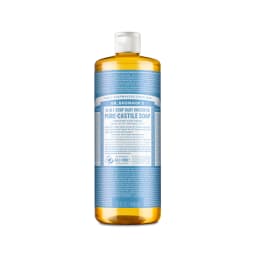
Pros
- Suitable for washing body, hair, and dishes
- Unscented
- Recycled packaging
Cons
- Contains palm oil, which has some environmental concerns
Weight:
4 ozActive ingredients:
Vegetable soapEWG ingredient score:
2Castile soaps are vegetable-based soaps that can be used in a number of different ways. They're great for camping because one bottle can serve as your shampoo, body wash, and dish soap. Cult favorite Dr. Bronner's unscented castile soap features organic ingredients packaged in a recycled plastic bottle. It's free of parabens, SLS/SLES, dyes, and fragrances, though it does contain palm oil, which has some environmental concerns. It comes in multiple sizes, but the tiny 4 oz. will be best for camping.
Best concentrate: Campsuds Biodegradable Concentrated Soap
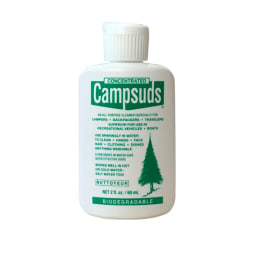
Pros
- Very concentrated, so a little goes a long way
- Effective in hot and cold water
Cons
- Contains SLS
Weight:
2 ozActive ingredients:
Essential oilsSurfactantEWG ingredient score:
4A favorite among outdoors enthusiasts, you'll find Campsuds stocked in most major outdoor retailers. Reviewers note that just a few drops of this ultra-concentrated soap are enough to do an effective cleaning job. It's suitable for cleaning your body and your dishes, and a little goes a long way. However, Campsuds do contain SLS, so it's important to use this one sparingly and far away from any water sources.
Advertisement
Pros
- Good for on-the-go cleaning
- Contain skin-soothing aloe vera
Cons
- Need to place back in your pack after use
- Contain synthetic fragrance
Weight:
7 ozActive ingredients:
AlcoholAloe veraEWG ingredient score:
3If a quick refresh is what you're looking for, these bathing wipes can get the job done. Each pack contains eight wipes for a no-rinse clean, so you don't need to worry about setting up a bathing station (though you do need to carry the wipes out of camp when you're done with them). Each wipe contains aloe vera, calendula oil, and preservatives that have a high safety rating from the EWG, though they do have added fragrance.
Pros
- Plastic-free
- Clean & safe ingredient list
Cons
- Might get messy in your pack
Weight:
7 ozActive ingredients:
Vegetable soapEWG ingredient score:
1This plastic-free soap bar from Meliora is great for soaking or quickly rinsing pots and pans, though don't expect the lather of a synthetic dishwashing detergent. Throw yours in a reusable bag so it doesn't get all over your pack, and feel free to keep using it once you get home. Containing vegetable soap and a splash of lemon essential oil, it's one of the cleanest options on our list with an EWG rating of 1.
Advertisement
Pros
- Clean & safe ingredient list
- Contain skin-soothing aloe vera
Cons
- Will need to transfer to a smaller bottle before camping
Weight:
16 ozActive ingredients:
Aloe veraVegetable soapEWG ingredient score:
1This gentle Castile soap from Public Goods is enhanced with aloe vera to soothe skin after a day in the sun. Its simple and clean ingredient list (vegetable oils, rosemary extract, aloe vera) makes it safe to use outdoors, though you will likely want to transfer it to a smaller bottle before heading out.
How to use biodegradable soap outdoors.
Never use soap (even the soaps on this list) within 200 feet of a water source when camping. That's the amount of space that Leave No Trace recommends leaving in order to ensure that soil filters through any potential irritants before they can harm aquatic life.
To abide by this golden rule of camping, here's how Tanner recommends going about your washing.
Washing yourself:
- Collect a bucket or bottle of water from your water source. Then, take your water and soap to a bathing station at least 200 feet (about 70 big steps) away.
- Jump in the water and rinse off.
- Walk to your bathing station. Use a little bit of soap to wipe down your body and rinse off with the water you collected.
Washing your dishes:
- Collect a bucket or bottle of water from your water source. Then, take your water and soap to a bathing station at least 200 feet (about 70 big steps) away.
- Wipe any large crumbs off your dishes and pack them out.
- Dig a small, 6- to 8-inch hole in the ground.
- Apply a bit of soap to your dishes and rinse them off with water over a strainer. Pack out any small bits of food the strainer catches, letting the water go into your hole.
- Cover the hole back up with soil to ensure that food smells don't attract nearby critters.
The takeaway.
Biodegradable soaps are more sustainable to clean with while camping, though you should still never use them within 200 feet of a water source. Throw one of these options in your backpack (along with your biodegradable sunscreen and sustainable swimwear) as you gear up for your low-impact trip.


